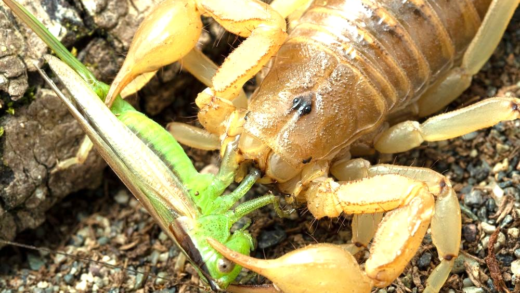Giant pandas do not hibernate like other bears due to their bamboo diet, which is available year-round. While some may enter a state of torpor during harsh conditions, they have unique adaptations, such as thick fur and a specialized diet, that help them survive winter. Pandas are equipped with behaviors and physical traits that allow them to thrive in their mountainous habitats without the need for hibernation.
Panda Classification: Why Are They Bears?
Panda classification is intriguing because it reveals the connection between pandas and bears. Pandas belong to the family Ursidae, which includes all bear species. Specifically, giant pandas are classified as Ailuropoda melanoleuca. This classification makes them part of the bear family, despite their unique characteristics.
The giant panda shares many features with other bears, such as their body structure and diet. However, they primarily consume bamboo, which distinguishes them from their carnivorous relatives. This dietary preference has led to specific adaptations in their digestive systems, allowing them to extract nutrients efficiently from bamboo.
Do All Bears Hibernate?
Not all bears hibernate. While species like the black bear and brown bear enter a state of hibernation during winter months, giant pandas do not. Hibernation is a survival strategy that allows bears to conserve energy when food is scarce. However, pandas have adapted to their environment in such a way that they can find food year-round.
This lack of hibernation is due to their bamboo-based diet, which is available throughout the winter. Thus, pandas remain active even in colder months, foraging for food. Other bear species, such as polar bears, also do not hibernate in the traditional sense, but they exhibit different behaviors to survive in extreme conditions.
What is Hibernation?
Hibernation is a state of reduced metabolic activity that many animals enter during winter. It allows them to conserve energy when food is scarce. During hibernation, an animal’s heart rate and body temperature drop significantly. This process is crucial for survival in harsh climates.
Hibernation can last for months, depending on the species and environmental conditions. While in this state, animals rely on fat reserves accumulated during the warmer months. Some common examples of hibernating animals include bears, ground squirrels, and bats. Understanding hibernation helps clarify why certain species, like pandas, have developed unique survival strategies that do not involve entering this state.
Why Don’t Pandas Hibernate Like Other Bears?
Giant pandas are unique among bears, primarily because they do not hibernate like their relatives. While other bear species rely on hibernation as a method to survive the harsh winter months, pandas have developed different strategies. The main reason for this difference is their diet, which consists almost entirely of bamboo. Bamboo is available year-round in their natural habitat, allowing pandas to remain active throughout the winter.
Additionally, pandas have a slower metabolism compared to other bears, which means they require less energy. This adaptation allows them to thrive without entering a hibernation state. Furthermore, the thick fur and layers of fat that pandas possess help them endure colder temperatures, making hibernation unnecessary.
In essence, while hibernation is a survival tactic for many bears, pandas have evolved to take advantage of their specific ecological niche, leading to their unique behavioral patterns.
What Do Pandas Do Instead of Hibernating?
Instead of hibernating, pandas engage in various activities to survive the winter months. Here are some key behaviors:
- Foraging: Pandas spend a significant portion of their day searching for bamboo. This is crucial since bamboo is low in calories, requiring pandas to consume large quantities to meet their energy needs.
- Social Interactions: During winter, pandas may also engage in social behaviors. They communicate through vocalizations and scent markings, which can play a role in their mating rituals.
- Resting: Pandas are known for their love of sleep. They often take long naps throughout the day, conserving energy while remaining active enough to find food.
This combination of foraging, socializing, and resting allows pandas to maintain their energy levels and adapt to the challenges of winter without entering a state of hibernation.
How Do Pandas Survive in Their Natural Habitat During Winter?
Pandas have several adaptations that enable them to thrive in colder environments. These adaptations include:
- Thick Fur: Pandas have dense fur that provides insulation against cold temperatures. This keeps them warm even when snow covers the ground.
- Body Fat: A layer of fat under their skin helps insulate pandas, providing additional warmth during winter.
- Dietary Adaptations: Their ability to digest bamboo efficiently allows them to find food sources that are abundant year-round.
- Behavioral Flexibility: Pandas adapt their daily activities based on weather conditions, foraging more during milder days.
These traits collectively enable pandas to navigate their environment effectively, securing food and maintaining warmth without the need for hibernation. In conclusion, while they may not hibernate, pandas have evolved remarkable strategies to thrive in their habitats even during the coldest months.
Are There Any Exceptions to Pandas Not Hibernating?
While it’s widely accepted that giant pandas do not hibernate like other bears, there can be exceptions based on environmental conditions. In certain regions, particularly where food sources become scarce or during extreme weather, some pandas might enter a state similar to hibernation. This behavior, however, is not true hibernation but rather a form of torpor, where their metabolic rate decreases significantly, allowing them to conserve energy.
For example, during particularly harsh winters in their natural habitats, pandas might reduce their activity levels to conserve energy. This reduction in activity can mimic hibernation, as pandas may stay in one place for extended periods, relying on their fat reserves while minimizing their energy expenditure. However, unlike true hibernators, they remain alert and can wake easily if necessary. This adaptability highlights how pandas can survive fluctuating environmental conditions without fully entering a hibernation state.
What Adaptations Do Pandas Have for Their Environment?
Pandas possess a range of unique adaptations that enable them to thrive in their mountainous, bamboo-rich habitats. These adaptations include:
- Specialized Diet: Giant pandas are primarily bamboo eaters, which dictates much of their behavior and habitat choice. Their digestive systems are adapted to process large quantities of bamboo, allowing them to extract the necessary nutrients from this low-calorie food source.
- Thick Fur and Body Fat: To withstand cold temperatures, pandas have thick fur and a layer of body fat that provides insulation. This helps them maintain body heat during winter months, ensuring they remain warm even in snowy conditions.
- Flexible Behavior: Pandas are known for their behavioral flexibility. They adapt their foraging habits based on seasonal changes and food availability. In winter, for instance, they may move to lower elevations where bamboo is more accessible.
- Strong Climbing Skills: Pandas are excellent climbers, which allows them to escape predators and reach bamboo in higher trees. Their strong limbs and claws facilitate climbing, further enhancing their survival in the wild.
These adaptations make pandas uniquely equipped to navigate their environment, enabling them to thrive despite the challenges presented by cold weather and limited food resources. As a result, while they do not hibernate, pandas demonstrate remarkable resilience and adaptability in their habitat.





Comments are closed.